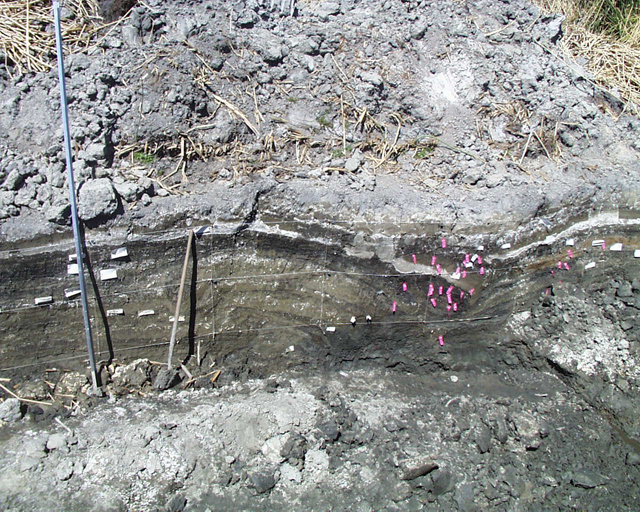30 August 2022–The recurrence interval for earthquakes along some California faults may be on average 16% longer than previously estimated, according to a new study in the journal Seismological Research Letters.
The revised estimates take into account a variable called event likelihood, which quantifies how likely it is that a particular past earthquake revealed in the geological record is real and unique.
The new estimates do not represent a major change for the overall picture of earthquake recurrence intervals for these California faults, given the other uncertainties involved in calculating intervals, said U.S. Geological Survey geologist Devin McPhillips.
However, the revised intervals could be important for assessing California’s long earthquake “hiatus.” The hiatus refers to the fact that there have been no ground-rupturing earthquakes along key paleoseismic sites in California for the last century, although the earthquake records from these sites suggest the length of this current pause is unusual.
The systematic increase in recurrence intervals observed in the SRL study may make this type of lengthy pause more likely, McPhillips writes.
Earthquake recurrence intervals are used to calculate the probability that a ground-rupturing earthquake will take place within a specific area of a fault within a certain number of years. Recurrence intervals are an important part of understanding and preparing for seismic hazards.
The intervals themselves are calculated after examining the evidence for past earthquakes in the geological record. As this evidence isn’t always clear, researchers use methods like those developed by Kate Scharer at the USGS to examine the quality of evidence for a particular earthquake and to calculate event likelihood.
McPhillips calculated event likelihoods for 85 earthquakes along strike-slip faults at eight paleoseismic sites in California, including six sites on the southern San Andreas Fault, the Hog Lake Fault on the San Jacinto Fault in southern California, and a site on the Hayward Fault in northern California.

He chose some of the sites in part because within the Third Uniform California Earthquake Rupture Forecast (UCERF3), there is a “systematic misfit” in recurrence intervals calculated in the forecast for these faults compared to intervals seen in paleoseismic records.
“My motivation in doing this study is trying to get at a bigger question, which is how do we account for uncertainty in recurrence intervals that’s related to not knowing how many earthquakes there actually are in the record at a particular site,” McPhillips said.
McPhillips used a modified version of Scharer’s event likelihood method, assessing the quality of the single best piece of evidence for a past earthquake, along with the quality of how well the evidence can be assigned to a specific stratigraphic level. He then calculated event likelihood using these two pieces of information.
With the addition of event likelihood, McPhillips found that recurrence intervals for most of the sites he studied increased when calculated with event likelihoods. The average recurrence interval increased by 16% but rose as high as 33% at some sites.
However, “taking event likelihoods into account doesn’t actually change the expected recurrence interval all that much in my view, given all the other uncertainties” that go into the interval calculation, McPhillips said.
“I’m happy to see that they make a difference and are worth documenting but they’re also not critical to the recurrence intervals that we calculate,” he added, “so it’s not like we have to go back and reassess the whole enterprise.”
McPhillips suggests that applying event likelihood corrections to recurrence intervals might be most important in studies that also correct for missing events in the paleoseismic record, such as UCERF3, since effects from the two tend to oppose each other.
The paper is part of an upcoming SRL focus section on deformation models for the U.S. National Seismic Hazard Model.
